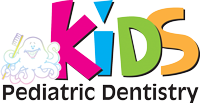
13 Sep From Tokyo to Toronto: How Children’s Dental Care Differs Globally?
When it comes to children’s dental care, parents everywhere want the same thing: healthy, happy smiles. But how kids get that care—and what parents are expected to do—varies quite a bit depending on where you live. Let’s take a tour from Tokyo to Toronto and see how dental habits and systems differ around the world, and what you, as a U.S. parent, can take away from it.
Japan: Preventive Care Comes First
In Japan, prevention is the heart of children’s dental care. Regular school-based checkups are common, and dentists focus on catching small issues before they become big ones. Parents are also encouraged to supervise brushing well into their child’s early teens, ensuring technique matters just as much as frequency.
Takeaway for U.S. parents: Supervision pays off. Even if your child is brushing twice a day, make sure they’re doing it properly and for the full two minutes.
Canada: Access and Education Hand in Hand
Canada, much like the U.S., blends public awareness with professional dental care. Some provinces provide dental programs for school-aged kids, and oral health education is a big part of wellness visits. Canadian parents are encouraged to schedule a child’s first dentist visit by their first birthday—earlier than many American families typically think about it.
Takeaway for U.S. parents: Don’t wait. Early dental visits set the stage for good oral habits and catch problems when they’re still easy to fix.
Europe: A Mixed Approach
Across Europe, children’s dental care looks different depending on the country. For example:
- Sweden offers free dental care for children up to age 23, with strong emphasis on preventive care.
- Germany covers twice-yearly checkups for kids through its health insurance system.
- The U.K. provides free dental care for children through the NHS, but parents often face long wait times to see providers.
Takeaway for U.S. parents: Consistency matters more than the system. Stick to a routine of checkups every six months and make dental care a non-negotiable part of your family’s health.
Developing Nations: Unique Challenges
In many developing countries, children’s dental care is often limited by access. Rural areas may not have regular dentists, and sugar-heavy diets without preventive programs lead to higher rates of cavities.
Some non-profits step in with mobile dental clinics or school education programs to fill the gap.
Takeaway for U.S. parents: Appreciate access and use it. If you live where dental care is readily available, take full advantage—because not every parent worldwide has that option.
U.S. Parents: What This Means for You
Looking at dental care around the world, one theme stands out: prevention beats treatment. Whether it’s supervised brushing in Japan, early visits in Canada, or government-supported care in Europe, the global message is clear—start early, stay consistent, and don’t take access for granted.
Here are three simple steps you can apply today:
- Book early and often. Schedule your child’s first dental visit by age one, and stick with twice-yearly checkups.
- Make brushing a team effort. Supervise until you’re sure your child can brush effectively on their own.
- Keep sugar in check. Snacks and drinks add up quickly—limit them to protect little teeth.
Your child’s smile may grow up in the U.S., but the best practices from around the world can help you raise healthier, cavity-free kids.
Have questions about children’s dental care? We’re here to help. Call us anytime at (972) 727-0011 and our friendly team will be glad to guide you. And remember—if your child ever faces a dental emergency, don’t wait. Visit your trusted Allen Pediatric Dentist right away to keep little smiles safe and healthy.
Recommended Resources
- Smile Around the World
- Cultural Approaches to Children’s Dental Care Around the World
- The Top 3 Countries Providing Excellent Oral Healthcare
